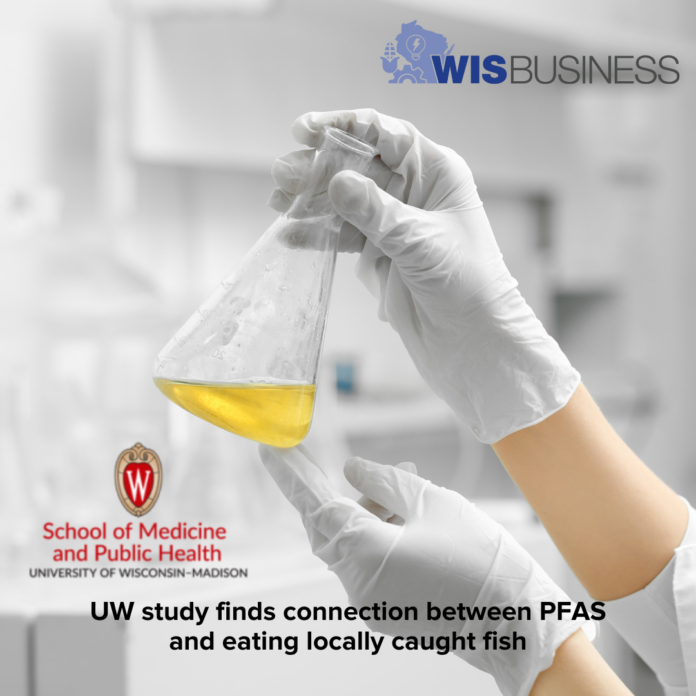UW-Madison researchers found higher levels of PFAS in the blood of older, higher-income white men who had eaten locally caught fish in the past year, according to a recent study.
The research, published recently in the Journal of Environmental Research, was led by scientists at the UW School of Medicine and Public Health. Lead author Amy Schultz, an epidemiology senior data scientist with the university, notes the upper Midwest is “an area of special concern” for PFAS contamination due to its history of manufacturing and a strong fishing tradition.
“While other localized studies have identified eating caught fish as a source of PFAS exposure, this was the first population-based biomonitoring study in the Great Lakes area to examine what other factors may also be associated with PFAS levels,” she said. “However, even in this statewide study, we found an association between PFAS levels and eating caught fish.”
Per- and poly-fluoroalkyl substances, typically called PFAS or “forever chemicals,” are man-made materials used in a wide range of consumer products such as non-stick pans and packing for food. They’ve been linked to various human health concerns including cancer and lower birth rates.
The research project focused on consumption of locally caught fish because contaminants such as PFAS can become concentrated higher up in the food chain, according to a release from the university.
Researchers analyzed samples from 605 adults who donated blood between 2014 and 2016 through the Survey of the Health of Wisconsin, now called the REACH Program. They tested them for 38 different types of PFAS using a method that can detect it at low levels, and compared results with eating habits, lifestyle, race, income level and other factors such as where they live.
The “strongest link” was found between higher PFAS levels and being older, male, non-Hispanic white, higher income and eating caught fish, the study shows. Researchers also found those who ate microwaved popcorn had “somewhat higher levels,” as PFAS compounds weren’t banned from use in lining popcorn bags until earlier this year.
Still, they didn’t find that eating fast food increased PFAS levels, despite knowing fast food containers are a source of exposure to the chemicals, according to Schultz. She notes the study represents a “first look” at understanding who is more likely to be exposed to PFAS in Wisconsin, and overall PFAS averages were low.
“Just because we found an association with eating caught fish with higher PFAS serum levels does not mean anglers should stop eating local fish,” she said.
The same research team previously found Wisconsin residents have lower PFAS levels than the national average.
The study comes as Gov. Tony Evers is urging quick approval of new federal standards to limit exposure to PFAS in drinking water, as his administration moves to implement the new regulations.
See the release and see more on the new PFAS standards at WisPolitics.






